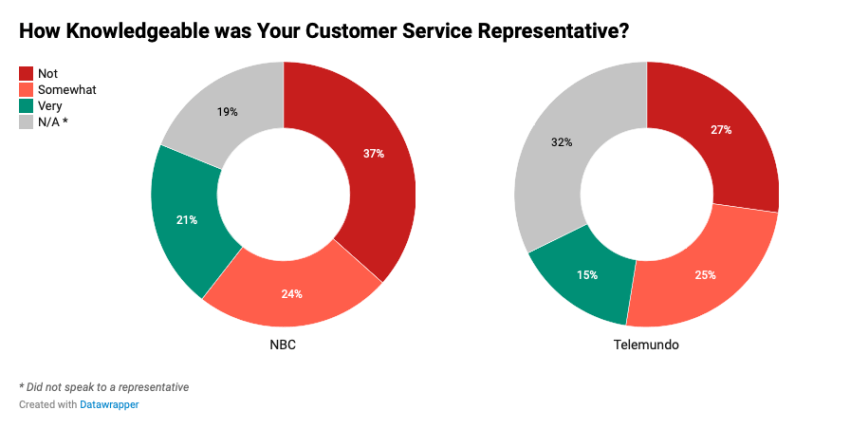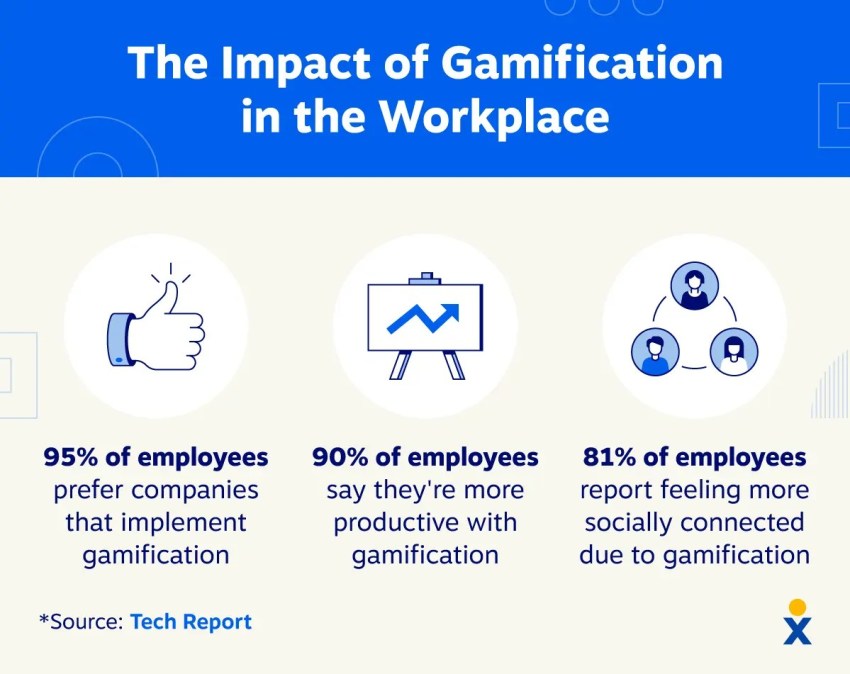Imagine the stress of dealing with frustrated customers day in and day out, often for low pay. It’s no wonder that call center agents are among the most likely employees to burnout and leave their jobs.
The average call center turnover rate ranges between 30-45%, and the pandemic has only intensified the problem. High churn rates in call centers lead to a constant cycle of hiring and training, draining resources and impacting customer service quality.
But what if, instead of constantly replacing agents, you could create a workplace where they actually wanted to stay?
This article explores the root causes of high call center turnover and provides solutions to lower turnover rates, improve employee experience, and protect your bottom line.
What’s the Average Call Center Turnover Rate & What Causes It
The call center turnover rate averages between 30-45% annually, meaning roughly one-third to nearly half of your agents could leave their jobs within a year. Different reports and sources may indicate a slightly different percentage as high as 50-60%, but this is the most common agent turnover rate across the call center industry.
Why do call centers have high turnover rates? Several factors contribute to this chronic issue:
- Stressful work environment: Dealing with frustrated or upset customers day in and out takes a toll on contact center agents and leads to burnout.
- Repetitive tasks: The nature of contact center work can often be monotonous, leading to boredom and disengagement.
- Low pay: Call center agents often earn less compared to other professions requiring similar levels of skill and effort.
- Limited career paths: Opportunities for growth and advancement within call centers can be limited, leaving agents feeling stagnant.
- Demanding performance targets: The pressure to meet strict metrics can create a stressful and demanding work environment.
- Poor company culture: Weak relationships with managers, minimal recognition, and no investment in staff development create an impersonal and demotivating call center environment.

“Corporate culture matters. How management chooses to treat its people impacts everything for better or for worse.”
These factors lead to low job satisfaction and high employee attrition. In fact, even before the pandemic, only 38% of call center employees reported feeling satisfied with their jobs.
The Impact of High Call Center Turnover & Why It Matters
Call center agent attrition isn’t just an HR problem — it directly impacts your bottom line. Every time an agent leaves, it triggers a chain reaction that damages customer relationships and slows business growth.
If not addressed promptly, high agent turnover becomes a costly problem. Replacing a single call center agent can cost anywhere from $6,000 to $20,000, according to Quality Assurance and Training Connection (QATC).
- Increased operational costs: Recruiting, hiring, and training new employees is expensive, impacting your budget.
- Reduced productivity and knowledge loss: Losing experienced contact enter agents means losing valuable expertise and efficient workflows, leading to decreased productivity.
- Negative impact on customer experience: Understaffing can cause longer wait times, frustrated customers, and lower customer satisfaction.
- Damaged employee morale: High contact center turnover creates a sense of instability and uncertainty, leading to high attrition rates.

Call center turnover affects aspects of your call center operations. Understand the far-reaching consequences and prioritize strategies to improve agent retention, enhance customer experience, and protect your company’s financial health.
How To Calculate Call Center Turnover Rate
To tackle contact center turnover effectively, you need to understand its scope. The call center turnover rate is a crucial metric and key performance indicator of employee engagement, calculated as a percentage.
The formula is simple:
(Number of Employees Who Left During a Period) ÷ (Average Number of Employees During That Period) x 100%
For example, if your call center averaged 150 agents last quarter, and 15 agents left during that time, your employee turnover rate would be 10%.

While the industry average for annual call center turnover is 30-45%, don’t wait for the year-end to assess the situation. Creating monthly benchmarks and tracking call center attrition rates timely allows you to:
- Identify trends: Spot patterns and problems early to build better retention strategies.
- Pinpoint root causes: Connect turnover trends with specific factors like lack of growth opportunities, poor staffing, or inadequate training.
- Develop data-driven solutions: Use your findings to create targeted retention strategies.
- Analyze turnover by segment: Understand if turnover is higher in specific teams, among newer hires, or low performers to identify targeted interventions.
How To Reduce Call Center Turnover & Improve Retention
Understanding why agents leave is the first step. The main goal? Creating a workplace where they succeed. Happy agents lead to happy customers.

Here’s how to make it happen:
1. Spot the warning signs
While calculating your turnover rate is essential, it’s equally important to be vigilant and identify early warning signs of potential attrition. Here are some red flags to watch out for:
- Decreased engagement: Are agents less enthusiastic or participating less in team meetings and activities?
- Increased absenteeism: Is there a rise in sick days or requests for time off?
- Performance decline: Are agents struggling to meet their targets or showing a drop in quality?
- Negative attitude: Have you noticed a shift toward negativity or cynicism in their communication or interactions?
- Increased complaints: Are agents expressing more frustration or dissatisfaction with their workload, processes, or management?
If you notice these signs, address them proactively. Have open conversations with your employees, listen to their concerns, and take steps to improve their work environment and experience.
2. Hire for culture fit
When hiring, don’t lower your standards just to fill seats quickly. Instead, prioritize finding candidates who align with your company culture and values, even if they have less experience.
Define the essential traits for success in your call center and seek those out in new hires. Remember that skills can be taught, but it’s much harder to instill values or change someone’s core beliefs.
Employees who resonate with your company culture stay engaged and committed in the long run.
3. Build a shared purpose
Beyond a paycheck, agents want to feel like they’re contributing to something meaningful. A clearly defined customer service philosophy can provide that sense of purpose. This philosophy should outline your team’s mission, values, and guiding principles, giving customer service agents a shared identity and a common goal to work towards.
Weave this philosophy into your meetings, training programs, and incentive structures to inspire and unite your team. When agents feel connected to a shared purpose, they stay. A strong sense of belonging saves turnover costs for your company.
4. Invest in onboarding and training
Invest time in equipping agents with the knowledge and skills they need to succeed.
Comprehensive initial training should cover everything from product knowledge and call center best practices to escalation protocols and access to resources. Follow this up with ongoing coaching and mentoring to help agents build confidence, improve their skills, and stay engaged.
Well-trained agents are more productive, less stressed, and more effective in their roles. A lack of adequate training can be a major reason for agent attrition.

5. Embrace flexibility
Today’s workforce values flexibility, so cater to that by offering a mix of remote work and on-site arrangements. Allowing agents to choose their work environment empowers them and improves job satisfaction.
Similarly, provide flexible scheduling options whenever possible, while maintaining sufficient coverage during peak hours.
To support flexible work arrangements, give your agents the necessary tools and technology, such as contact center software, CRM access, and omnichannel communication tools. They’ll work effectively from anywhere and be more productive and satisfied.
6. Use data and technology to reduce stress
Stress is a big factor impacting call center representative turnover, but it’s not always caused by difficult customers. Call complexity, confusing processes, and a lack of support also contribute to unsustainable stress levels.
Use call center data to identify pain points, streamline workflows, and simplify processes. Real-time performance metrics, such as first-call resolution rates, average handle times, and customer satisfaction scores (CSAT) are great tools for contact center managers to identify and address issues before they lead to agent burnout and turnover.
Consider implementing AI-powered tools like chatbots to handle initial customer interactions and skills-based routing to ensure agents are matched with calls they can confidently handle. Use contact center software that comes with all these features.

Provide agents with access to customer service CRMs and screen pops that display relevant customer information, allowing for more personalized and efficient interactions. Minimizing technology-related stressors and simplifying processes improve agent satisfaction and retention.
7. Provide clear career paths
Call center roles can be a stepping stone to other opportunities within your company. Show your agents that there’s a future for them by outlining clear career paths within the support team and other departments.
Highlight the steps involved, the skills required, and the potential benefits. Offer opportunities for professional development, mentorship, and skill-building to support their career growth. Also, conduct regular agent performance reviews and career development discussions to track progress and provide guidance.
When agents see a clear path forward and feel supported in their development, they’ll be more than willing to stay with you.
8. Reward and recognize
While fair wages and benefits are important, don’t overlook incentives and recognition. Establish clear goals and reward agents for achieving them through bonuses, incentives, or other forms of recognition.
Introduce gamification elements, such as leaderboards and competitions, to motivate agents and create friendly competition. Regularly acknowledging and appreciating agents’ hard work and contributions makes them feel valued.

9. Empower your managers
Strong contact center leaders are the backbone of a positive and productive environment. Call center leaders need to invest in call center managers and team leaders as much as they do in their agents.
Equip them with comprehensive training that covers effective leadership strategies, especially in a remote and hybrid workspace. Offer leadership development opportunities, so they can grow their skills and advance their careers.
Crucially, trust your managers to lead their teams effectively. Give them the autonomy to make decisions and encourage open communication where they feel comfortable sharing ideas and concerns. Provide them with the necessary tools and resources to monitor performance and support their agents effectively.
When managers feel supported and empowered, they build strong teams, provide valuable feedback and coaching, and create a supportive work environment. This, in turn, leads to increased agent satisfaction, engagement, and higher retention rates.
10. Learn from exit interviews
Exit interviews offer valuable insights into why agents leave. Use them to identify areas for improvement. Ask open-ended questions that encourage departing agents to share their honest feedback about their experiences, their relationship with their manager, and any challenges they faced.
Analyze exit interview data to identify recurring themes and prioritize areas for action. Use the insights gained to implement changes that address the root causes of turnover.
Related: How to Overcome These 15 Contact Center Problems
Avoid high agent turnover and build a tight team
Call center attrition is never going away. But with the right processes and tools, you can get it to a manageable level and get back to making customers happy.
While process and culture changes take time, a cloud call center can quickly fix the most common agent complaints. Give them the freedom to work from where they want with the Nextiva App and then use advanced tools like call analytics, AI-powered chatbots, and Call Pop to lighten the load.
The more you show your reps that you care about their well-being and work-life balance, the more likely they’ll be to stick around for the long haul.

Make Customer Service Look Easy
Customer delight begins here. The Nextiva Contact Center checks all the boxes.

















 Business Communication
Business Communication 










![Majority of Gen Z Still Use Phone Calls for Support — But They Turn to AI First [New Data]](https://www.nextiva.com/cdn-cgi/image/width=850,height=478,fit=cover,gravity=auto,format=auto/blog/wp-content/uploads/sites/10/2025/12/gen-z-still-embrace-phone-based-support-hero.webp)
